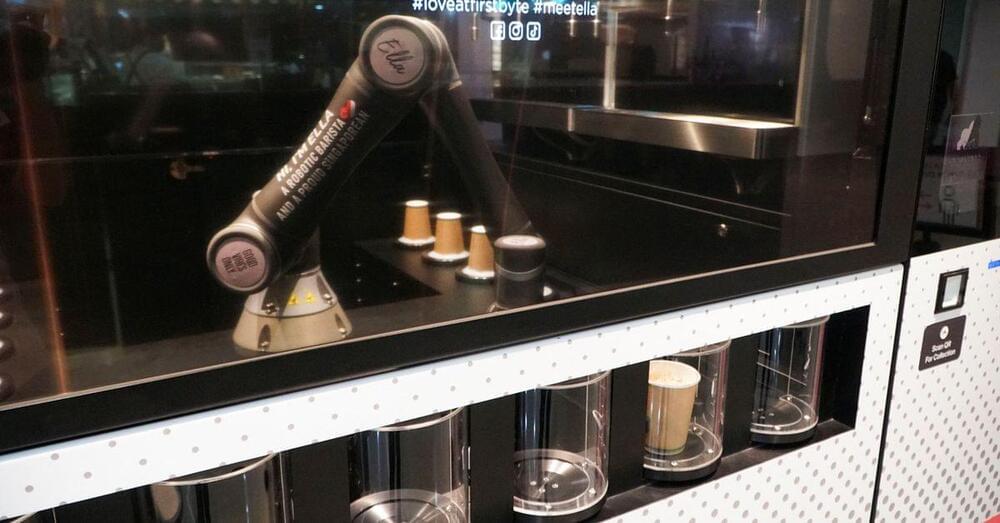Category: robotics/AI – Page 1,628

Study explores the concept of artificial consciousness in the context of the film ‘Being John Malkovich’
Recent technological advances, such as the development of increasingly sophisticated machine learning algorithms and robots, have sparked much debate about artificial intelligence (AI) and artificial consciousness. While many of the tools created to date have achieved remarkable results, there have been many discussions about what differentiates them from humans.
More specifically, computer scientists and neuroscientists have been pondering on the difference between intelligence and “consciousness,” wondering whether machines will ever be able to attain the latter. Amar Singh, Assistant Professor at Banaras Hindu University, recently published a paper in a special issue of Springer Link’s AI & Society that explores these concepts by drawing parallels with the fantasy film “Being John Malkovich.”
“Being John Malkovich” is a 1999 film directed by Spike Jonze and featuring John Cusack, Cameron Diaz, and other famous Hollywood stars. The film tells the story of a puppeteer who discovers a portal through which he can access the mind of the movie star John Malkovich, while also altering his being.


From baristas to inspectors: Singapore’s robot workforce plugs labour gaps
Lack of a robotic hand that can match a human hand will continue to delay full automation.
SINGAPORE, May 30 (Reuters) — After struggling to find staff during the pandemic, businesses in Singapore have increasingly turned to deploying robots to help carry out a range of tasks, from surveying construction sites to scanning library bookshelves.
The city-state relies on foreign workers, but their number fell by 235,700 between December 2019 and September 2021, according to the manpower ministry, which notes how COVID-19 curbs have sped up “the pace of technology adoption and automation” by companies.
At a Singapore construction site, a four-legged robot called “Spot”, built by U.S. company Boston Dynamics, scans sections of mud and gravel to check on work progress, with data fed back to construction company Gammon’s control room.


AI Attempts Converting Python Code To C++
😳!
[Alexander] created codex_py2cpp as a way of experimenting with Codex, an AI intended to translate natural language into code. [Alexander] had slightly different ideas, however, and created codex_py2cpp as a way to play with the idea of automagically converting Python into C++. It’s not really intended to create robust code conversions, but as far as experiments go, it’s pretty neat.

A Long Short-Term Memory for AI Applications in Spike-based Neuromorphic Hardware
Spike-based neuromorphic hardware holds the promise to provide more energy efficient implementations of Deep Neural Networks (DNNs) than standard hardware such as GPUs. But this requires to understand how DNNs can be emulated in an event-based sparse firing regime, since otherwise the energy-advantage gets lost. In particular, DNNs that solve sequence processing tasks typically employ Long Short-Term Memory (LSTM) units that are hard to emulate with few spikes. We show that a facet of many biological neurons, slow after-hyperpolarizing (AHP) currents after each spike, provides an efficient solution. AHP-currents can easily be implemented in neuromorphic hardware that supports multi-compartment neuron models, such as Intel’s Loihi chip. Filter approximation theory explains why AHP-neurons can emulate the function of LSTM units.

Artificial intelligence helps in the identification of astronomical objects
Classifying celestial objects is a long-standing problem. With sources at near unimaginable distances, sometimes it’s difficult for researchers to distinguish between objects such as stars, galaxies, quasars or supernovae.
Instituto de Astrofísica e Ciências do Espaço’s (IA) researchers Pedro Cunha and Andrew Humphrey tried to solve this classical problem by creating SHEEP, a machine-learning algorithm that determines the nature of astronomical sources. Andrew Humphrey (IA & University of Porto, Portugal) comments: “The problem of classifying celestial objects is very challenging, in terms of the numbers and the complexity of the universe, and artificial intelligence is a very promising tool for this type of task.”
The first author of the article, now published in the journal Astronomy & Astrophysics, Pedro Cunha, a Ph.D. student at IA and in the Dept. of Physics and the University of Porto, says, “This work was born as a side project from my MSc thesis. It combined the lessons learned during that time into a unique project.”

DONATE: Dear all
This March, we, a group of educators, scientists, and psychologists started an educational non-profit (501 c3) Earthlings Hub, helping kids in refugee camps and evacuated orphanages. We are getting lots of requests for help, and are in urgent need to raise funds. If you happen to have any connections to educational and humanitarian charities, or if your universities or companies may be interested in providing some financial support to our program, we would really appreciate that! Please share with everyone who might be able to offer help or advice.
Our advisory board includes NASA astronaut Greg Chamitoff, Professor Uri Wilensky, early math educator Maria Droujkova, AI visionary Joscha Bach, and others.
Support Us The Earthlings Hub works with a fiscal sponsor Blue Marble Space. CREDIT CARD & PAYPAL Please contact us if you would like to via other means, such as checks, stocks, cryptocurrency, or using your Donor Advised Fund: [email protected]
AI less about ‘killer robots,’ more about Pentagon transformation, Groen says
“We’ve spent a lot of time in education to help people understand that just like an automobile extends your capabilities in the physical domain, artificial intelligence extends your abilities within the data domain and the information domain,” the general said Wednesday.
AI and its traces can be found across the Pentagon and its many enclaves and alcoves. The department has for years recognized its value as well, describing the tech in a 2018 strategy as rapidly changing businesses, industries and military threats. More can be done, Groen said.
“Implementation in the department, of course, is always a challenge, as new technology meets legacy processes, legacy organizations and legacy technology,” he said, later adding: “We believe that a lot of the rules have to change, a lot of the thought processes have been rendered obsolete, and, maybe, the cores of how our organizational processes work have to be reevaluated through the lens of artificial intelligence and data.”